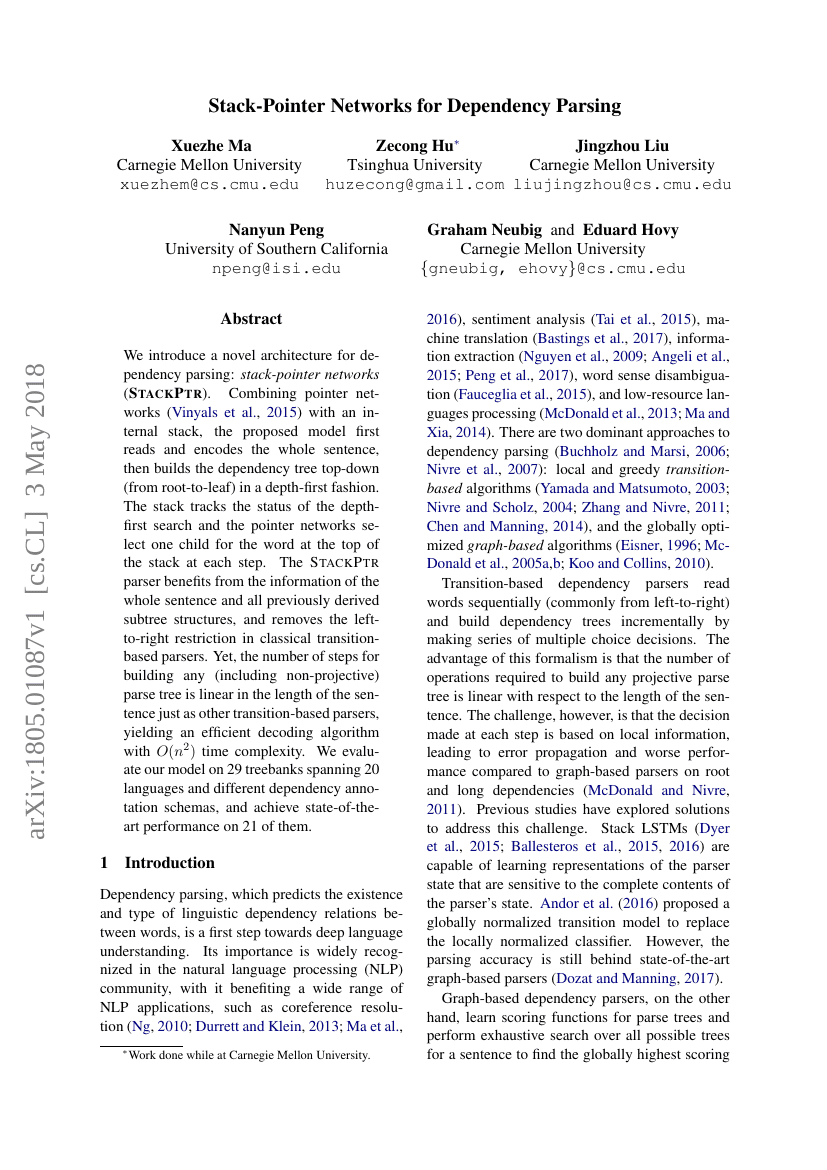Command Palette
Search for a command to run...
Xuezhe Ma; Zecong Hu; Jingzhou Liu; Nanyun Peng; Graham Neubig; Eduard Hovy

Abstract
We introduce a novel architecture for dependency parsing: \emph{stack-pointer networks} (\textbf{\textsc{StackPtr}}). Combining pointer networks~\citep{vinyals2015pointer} with an internal stack, the proposed model first reads and encodes the whole sentence, then builds the dependency tree top-down (from root-to-leaf) in a depth-first fashion. The stack tracks the status of the depth-first search and the pointer networks select one child for the word at the top of the stack at each step. The \textsc{StackPtr} parser benefits from the information of the whole sentence and all previously derived subtree structures, and removes the left-to-right restriction in classical transition-based parsers. Yet, the number of steps for building any (including non-projective) parse tree is linear in the length of the sentence just as other transition-based parsers, yielding an efficient decoding algorithm with $O(n^2)$ time complexity. We evaluate our model on 29 treebanks spanning 20 languages and different dependency annotation schemas, and achieve state-of-the-art performance on 21 of them.
Code Repositories
Benchmarks
| Benchmark | Methodology | Metrics |
|---|---|---|
| dependency-parsing-on-penn-treebank | Stack-Pointer Network | LAS: 94.19 POS: 97.3 UAS: 95.87 |
Build AI with AI
From idea to launch — accelerate your AI development with free AI co-coding, out-of-the-box environment and best price of GPUs.